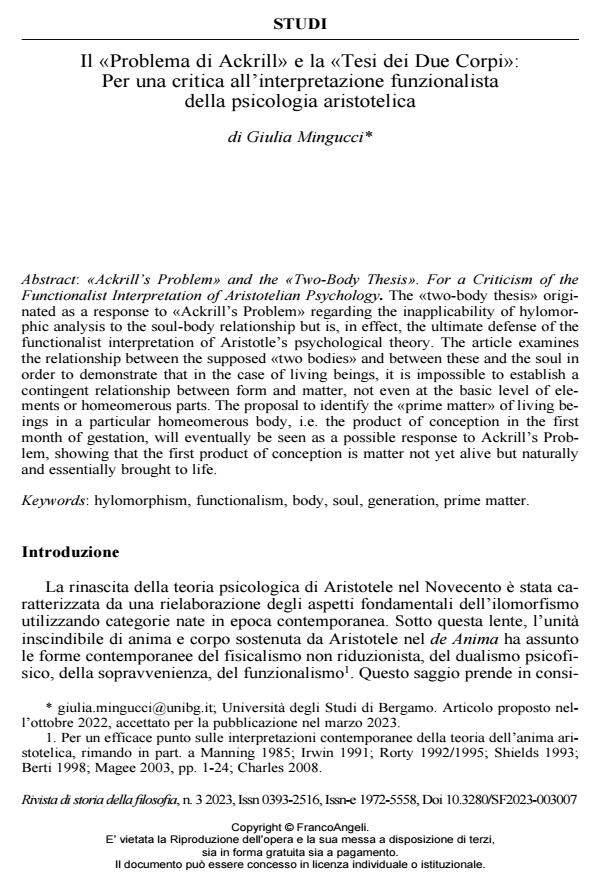Il «Problema di Ackrill» e la «Tesi dei Due Corpi»: Per una critica all’interpretazione funzionalista della psicologia aristotelica
Titolo Rivista RIVISTA DI STORIA DELLA FILOSOFIA
Autori/Curatori Giulia Mingucci
Anno di pubblicazione 2023 Fascicolo 2023/3
Lingua Italiano Numero pagine 17 P. 447-463 Dimensione file 179 KB
DOI 10.3280/SF2023-003007
Il DOI è il codice a barre della proprietà intellettuale: per saperne di più
clicca qui
Qui sotto puoi vedere in anteprima la prima pagina di questo articolo.
Se questo articolo ti interessa, lo puoi acquistare (e scaricare in formato pdf) seguendo le facili indicazioni per acquistare il download credit. Acquista Download Credits per scaricare questo Articolo in formato PDF

FrancoAngeli è membro della Publishers International Linking Association, Inc (PILA)associazione indipendente e non profit per facilitare (attraverso i servizi tecnologici implementati da CrossRef.org) l’accesso degli studiosi ai contenuti digitali nelle pubblicazioni professionali e scientifiche
The «two-body thesis» originated as a response to «Ackrill’s Problem» regarding the inapplicability of hylomor- phic analysis to the soul-body relationship but is, in effect, the ultimate defense of the functionalist interpretation of Aristotle’s psychological theory. The article examines the relationship between the supposed «two bodies» and between these and the soul in order to demonstrate that in the case of living beings, it is impossible to establish a contingent relationship between form and matter, not even at the basic level of elements or homeomerous parts. The proposal to identify the «prime matter» of living beings in a particular homeomerous body, i.e. the product of conception in the first month of gestation, will eventually be seen as a possible response to Ackrill’s Problem, showing that the first product of conception is matter not yet alive but naturally and essentially brought to life.
Parole chiave:hylomorphism, functionalism, body, soul, generation, prime matter.
Giulia Mingucci, Il «Problema di Ackrill» e la «Tesi dei Due Corpi»: Per una critica all’interpretazione funzionalista della psicologia aristotelica in "RIVISTA DI STORIA DELLA FILOSOFIA" 3/2023, pp 447-463, DOI: 10.3280/SF2023-003007